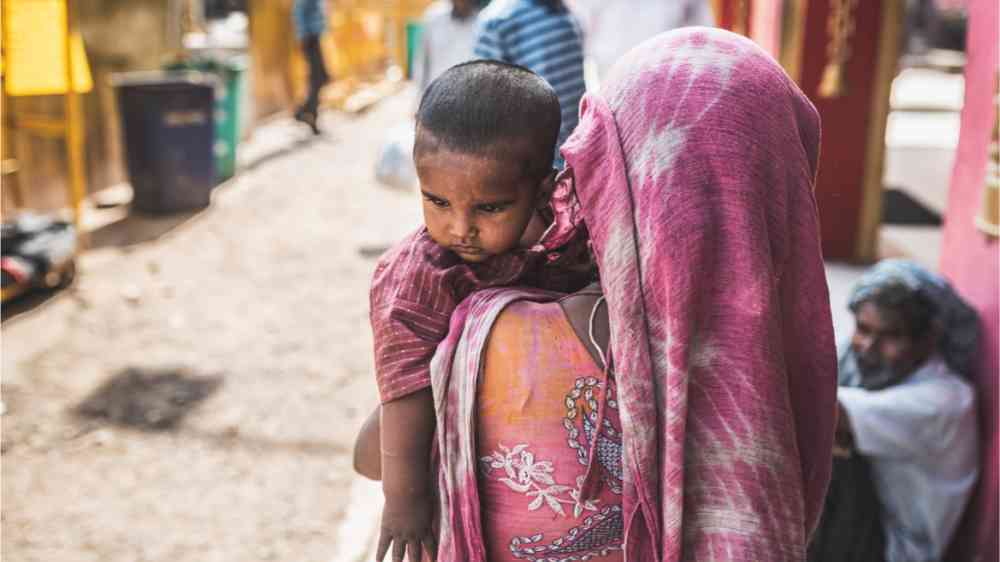Financing India’s heat resilience

As the global temperature rises, India grapples with increasingly frequent and prolonged heatwaves. The situation's urgency is underscored by estimates that predict a 15-fold increase in heatwaves over the next 30 years if the global temperature rises by 2º C.
This year, India, the largest democracy in the world, witnessed historic elections, and the extreme heat was a hot topic in the media coverage for the elections, with outlets like Al Jazeera, Time, CNN, and The Guardian all wondering if temperatures above 45 degrees Celsius affected voter turnout. Hundreds of voters died due to the heat, including two dozen poll workers.
Heat severely impacts India's economy, labor productivity, and public health. Between 2001 and 2020, India lost 259 billion hours of labour annually. The heatwave in 2022 slashed wheat yields by 15-20% and milk production by 15%. Chicken prices for farmers were reduced by 50% as they rushed to sell them before succumbing to the heat. Rising vegetable losses also drive up food inflation, burning a hole in everyone's pocket. Additionally, a University of Cambridge study finds that the 2022 heatwave increased the vulnerability of almost 90% of Indians to health issues and higher risks of death.
So, what is the government doing about it, you ask?
In 2019, the National Disaster Management Authority (NDMA), a government body responsible for disaster management in India, released guidelines on managing heatwaves. These guidelines encouraged states and cities to draft Heat Action Plans (HAPs). The authority started prepping for the 2024 heatwave in October 2023 and advised states to upgrade their Heat Wave Action Plans (HAPs). In February 2024, NDMA held a heatwave preparedness workshop for state ministries and departments, demonstrating its proactive approach to managing heatwaves.
However, a comprehensive study by the Centre for Policy Research (CPR) found several issues with HAPs. These issues include a lack of local context, inadequate funding, and poor targeting of vulnerable groups. For instance, the study highlighted that Mumbai's urban heat island effect acts as a heat multiplier and needs special attention, but it isn't as big of an issue in rural Uttar Pradesh. Additionally, the study revealed that only 30% of HAPs discuss funding mechanisms, and most call for the departments to self-allocate resources, indicating a significant gap in financial planning.
While there are no estimates for public investment in heat resilience programs in India, a recent Climate Policy Initiative study shows that INR 3,260 billion (USD 43.8 billion) of central government spending on CSS already contributes to climate resilience, with states contributing even more. Despite the public investment, the adaptation financing gap persists. Therefore, with increasing and prolonged incidences of heat waves, a more focused approach to financing and implementing heat management solutions is needed.
The need for more significant funding to adapt to heat and build resilience cannot be overstated. It is crucial to attract substantial financial support to address the heat resilience issue effectively.
For developing countries like India, poverty alleviation, food security, and sustainable development are at the heart of all adaptation and resilience activities. Therefore, investing in social protection and development is essential for enabling heat resilience.
Public financing will likely play a significant role in financing heat resilience. So, mainstreaming heat management considerations in development and infrastructure schemes is essential. The good news is that central and state governments in India have several schemes that already include components to address and mitigate heat risk. For example, the Rashtriya Krishi Vikas Yojana contains provisions for shelter and water to reduce livestock heat stress, and the Pradhan Mantri Awas Yojana - Urban can help build green and heat-resilient homes. Aligning HAPs with these schemes and focusing on implementing these provisions could unlock millions of dollars for heat resilience.
In addition to schemes, India has several thematic funds that can be utilized to build resilience to heat. For example, the Compensatory Afforestation Fund Management and Planning Authority (CAMPA) Fund, which is perpetually under-utilized, can finance afforestation and some nature-based solutions. Funds such as National Disaster Risk Management Fund and State Disaster Risk Management Fund can also help.
Most HAPs call for state/local departments to allocate funds for implementation. A report by Climate Policy Initiative recommends that in cases where state/local are responsible for financing adaptation initiatives, increasing state fiscal capacity is crucial. The report suggests that India's 16th Finance Commission includes vulnerability-related parameters as a variable when setting the criteria and formula for allocating funds to state governments.
However, public funding will not be enough, and attracting private finance to implement heat action in India is essential. Several startups are rising to the occasion. For example, EcoZen provides solar energy cold storage solutions, while Sahaja Seeds offers heat and drought-resistant seeds. Since the affordability of some of these solutions can be an issue, the government can help with subsidies or green public procurement, a strategy where public entities purchase goods and services with lower environmental impacts, to encourage the private sector and scale these initiatives. The private sector is also experimenting with business models to reduce upfront costs, and in Pune, innovative models like Cooling as a Service are being tested.
In addition to financing, it is essential to establish early warning systems and create awareness among the community. Community-led initiatives will ensure last-mile delivery of the resilience plans and funding. Partnerships with civil society and community organizations are paramount to ensure that the recurring nature of heat waves can be dealt with sustainably.